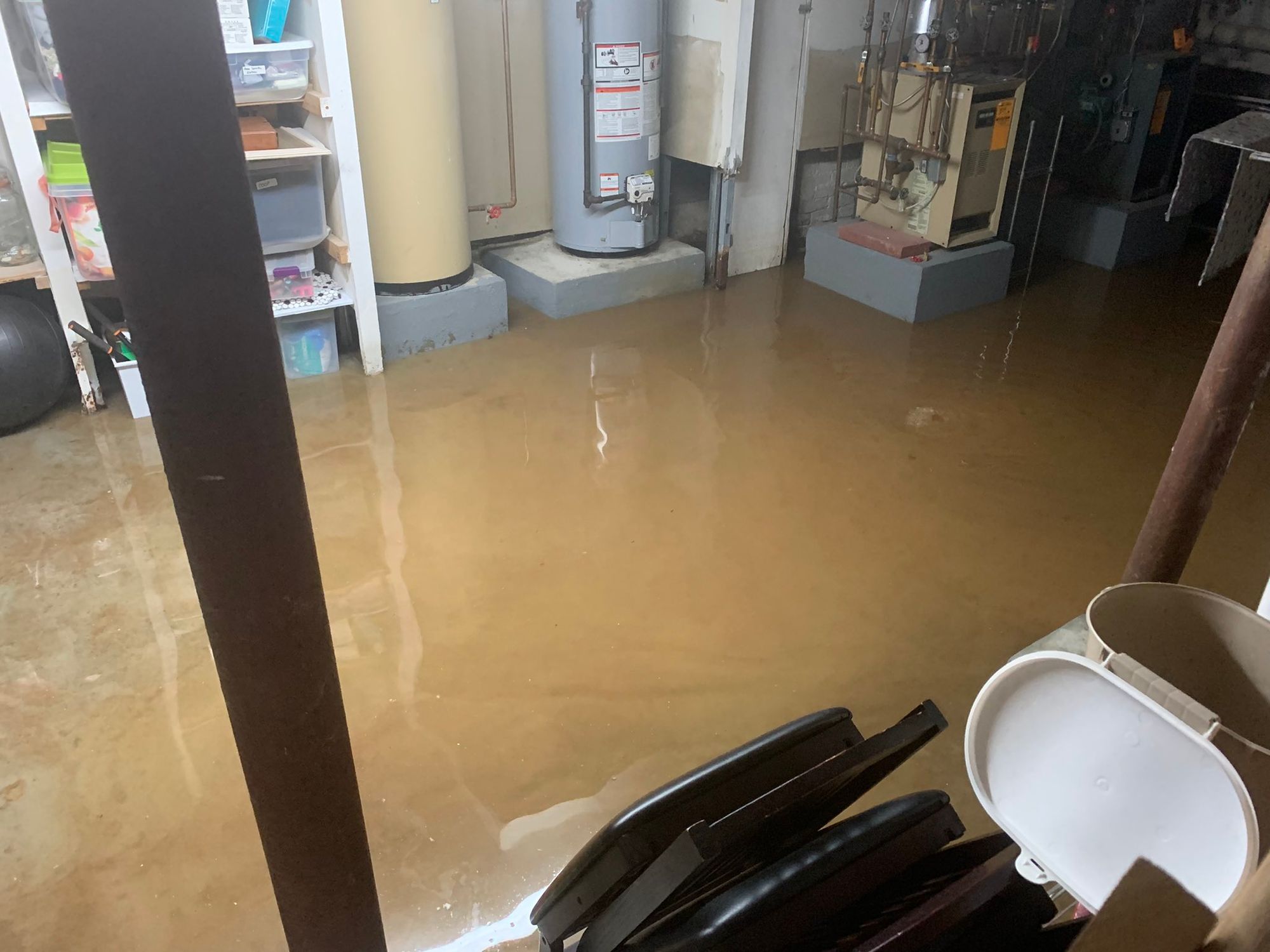

Articles
Why Does My Basement Flood
Modified: May 6, 2024
Discover expert articles on why basements flood and how to prevent water damage. Protect your home with our helpful advice and tips.
(Many of the links in this article redirect to a specific reviewed product. Your purchase of these products through affiliate links helps to generate commission for Storables.com, at no extra cost. Learn more)
Introduction
Basement flooding can be a nightmare for homeowners. Not only does it cause extensive damage to your property, but it also poses serious health and safety risks. If you’ve ever experienced a flooded basement, you know how frustrating and costly it can be to deal with the aftermath.
But why does your basement flood in the first place? Understanding the common causes of basement flooding is crucial in order to take preventive measures and protect your home from future water damage.
In this article, we will explore the most common causes of basement flooding and provide you with practical tips on how to prevent it. Whether you’re dealing with a current flooding issue or simply want to safeguard your basement against future disasters, this article will help you navigate the world of basement water damage.
So, let’s dive in and uncover the reasons behind basement flooding and how you can keep your basement dry and mold-free.
Key Takeaways:
- Preventing basement flooding requires maintaining a proper drainage system, addressing foundation issues, and installing a sump pump with a backup system. Regular maintenance and prompt repairs are essential for safeguarding your home.
- Properly maintaining the plumbing in your basement, fixing foundation cracks, and grading your yard away from the foundation are crucial steps in preventing water damage and basement flooding. Stay proactive and seek professional advice when needed.
Read more: My Basement Floods When It Rains
Common Causes of Basement Flooding
Basement flooding can occur due to various reasons, and it’s important to understand these causes to effectively prevent and mitigate water damage. Here are some of the most common causes of basement flooding:
- Poor Drainage System: A poorly designed or maintained drainage system is one of the leading causes of basement flooding. If your home’s downspouts and gutters are clogged or improperly installed, they can cause water to accumulate around the foundation, leading to water seeping into the basement.
- Rainwater Runoff: When heavy rains occur, the excess water can overwhelm the drainage system. If the soil around your home is not adequately graded or if your property is situated on a low-lying area, there is a higher risk of basement flooding due to rainwater runoff.
- Foundation Issues: Cracks and leaks in the foundation walls and floor can allow water to enter the basement. Over time, the pressure from the surrounding soil can also cause foundation walls to bow or shift, further increasing the risk of water infiltration.
- Sump Pump Failure: A sump pump is a crucial component of a basement waterproofing system. It helps prevent flooding by pumping out excess water that accumulates in the sump pit. However, if the sump pump malfunctions or there is a power outage, your basement becomes vulnerable to flooding.
- Plumbing Issues: Leaking or burst pipes in the basement can quickly turn into a flooding disaster. Whether it’s a faulty pipe joint, deteriorated plumbing, or a blocked sewer line, any plumbing issue can lead to water damage in your basement.
These are just a few of the common causes of basement flooding, and there may be other factors specific to your home’s location and construction. The good news is that with proper preventive measures, you can significantly reduce the risk of basement flooding and keep your home safe and dry.
Poor Drainage System
A poor drainage system is one of the primary causes of basement flooding. When rainwater or melting snow has no proper outlet, it can accumulate around the foundation of your home, leading to water seepage into the basement. Here’s what you need to know about poor drainage and how to address it:
Clogged Gutters and Downspouts: If your gutters and downspouts are clogged with leaves, debris, or ice, they won’t be able to effectively channel water away from your home. As a result, water can overflow and pool around the foundation walls, increasing the risk of basement flooding. Regularly cleaning and maintaining your gutters and downspouts can prevent this issue.
Improper Grading: The grading of your yard refers to how the soil slopes away from your home. If the grading is poorly done or has settled over time, water can pool near the foundation instead of being directed away. You can improve the grading by adding soil to create a gentle slope away from your home’s perimeter.
Missing or Insufficient Drainage Systems: Homes with inadequate or non-existent drainage systems are highly susceptible to basement flooding. A proper drainage system, such as French drains or surface drains, can help divert water away from the foundation. Installing these drainage systems, or retrofitting your existing ones, can significantly reduce the risk of basement flooding.
Solutions: To address poor drainage and prevent basement flooding, it’s essential to take the following steps:
- Clean and Maintain Gutters and Downspouts: Remove debris and ensure that your gutters and downspouts are free-flowing. Regularly inspect and clean them to prevent water overflow.
- Install Downspout Extensions: Extend your downspouts away from the foundation, directing water at least six feet away from your home.
- Grade Your Yard: Check the slope of your yard and ensure that it directs water away from your home. If necessary, add soil to create a proper slope.
- Install Drainage Systems: Consider installing French drains or surface drains around your home to capture and redirect water away from the foundation.
By addressing poor drainage issues, you can significantly reduce the risk of basement flooding and protect your home from water damage.
Rainwater Runoff
Rainwater runoff is another common cause of basement flooding, especially during periods of heavy rainfall. When the ground becomes saturated and cannot absorb all the water, it can lead to pooling and increase the risk of water seeping into your basement. Here’s what you need to know about rainwater runoff and how to address it:
Inadequate Grading: If the soil around your home is not properly graded, rainwater can flow towards the foundation instead of away from it. This can create a pool of water around the base of your home, increasing the chance of basement flooding. It’s essential to ensure that the soil around your home slopes away, directing water to flow away from the foundation.
Surface Water Accumulation: If your property is situated on a low-lying area or has poor soil composition, surface water can accumulate and put additional pressure on your foundation walls. This can result in water infiltration and basement flooding. Installing proper drainage systems, such as French drains or swales, can help redirect surface water and prevent it from pooling near your home.
Saturated Soil: When the soil surrounding your home becomes saturated due to heavy rainfall or prolonged wet weather, it can no longer absorb water efficiently. This leads to increased hydrostatic pressure against your foundation walls, potentially causing leaks and basement flooding. Installing a foundation waterproofing system can help mitigate the effects of saturated soil and protect your basement from water damage.
Solutions: To address rainwater runoff and reduce the risk of basement flooding, consider the following steps:
- Grade Your Yard: Ensure that the soil around your home slopes away from the foundation. If needed, add soil to create a proper grading that directs water away from your home.
- Install French Drains or Swales: These drainage systems can help channel water away from your home and prevent it from accumulating near the foundation.
- Use Rain Barrels or Rain Gardens: Implement rainwater harvesting systems, such as rain barrels or rain gardens, to capture and manage excess rainwater on your property.
- Consider Foundation Waterproofing: If your area experiences frequent or severe rainfall, investing in foundation waterproofing can provide an added layer of protection against basement flooding.
By taking preventive measures to address rainwater runoff, you can minimize the risk of basement flooding and protect your home from water damage.
Foundation Issues
Foundation issues can be a significant factor leading to basement flooding. When the foundation of your home becomes compromised, it can allow water to enter the basement, resulting in water damage and potential flooding. Here are some common foundation issues that can contribute to basement flooding:
Cracks in Foundation Walls: Over time, the soil around your home can exert pressure on the foundation walls, causing them to crack. These cracks can provide an entry point for water to seep into the basement. It’s crucial to regularly inspect your foundation walls for cracks and address them promptly to prevent water infiltration.
Bowing or Shifting Foundation Walls: If the foundation walls start to bow or shift due to excessive hydrostatic pressure or poor construction, it can create gaps or vulnerabilities where water can enter the basement. This can result in severe basement flooding if not addressed in a timely manner.
Foundation Wall Leaks: In some cases, the foundation walls themselves may not be compromised, but there could be leaks around windows, doorways, or utility penetrations. These leaks can allow water to seep into the basement, leading to water damage. Proper sealing and waterproofing strategies can help address foundation wall leaks.
Solutions: To address foundation issues and prevent basement flooding, consider the following steps:
- Inspect and Repair Foundation Cracks: Regularly inspect the foundation walls for cracks and address them promptly. Depending on the severity of the cracks, you may need to consult a professional for repair and reinforcement.
- Install Foundation Waterproofing: Applying a waterproofing membrane or coating to the exterior of your foundation walls can provide an extra layer of protection against water infiltration.
- Improve Exterior Drainage: Ensure that the grading around your home slopes away from the foundation, and install proper drainage systems, such as French drains, to redirect water away from the foundation.
- Seal Foundation Wall Leaks: Identify and seal any leaks around windows, doorways, and utility penetrations using appropriate waterproofing materials.
- Consult a Professional: If you suspect significant foundation issues, it’s advisable to consult a foundation repair specialist who can assess the situation and provide the necessary repairs or reinforcements.
By addressing foundation issues and implementing preventive measures, you can safeguard your basement against flooding and ensure the structural integrity of your home.
Read more: Why Did My Washing Machine Flood
Sump Pump Failure
A sump pump is a crucial component of a basement waterproofing system. It helps prevent basement flooding by collecting and removing excess water that accumulates in the sump pit. However, sump pump failure can occur, leaving your basement vulnerable to flooding. Here’s what you need to know about sump pump failure and how to address it:
Lack of Maintenance: Like any mechanical device, sump pumps require regular maintenance to ensure optimal functioning. If a sump pump is not cleaned and inspected regularly, debris can clog the pump or its discharge pipe, leading to failure when you need it most. It’s important to follow the manufacturer’s guidelines for maintenance and inspect your sump pump on a regular basis.
Power Outages: When a heavy storm hits, power outages can occur, rendering your sump pump unusable. Without a backup power source, your basement becomes susceptible to flooding during power outages. Installing a battery backup system or a generator can help ensure your sump pump continues to operate even during power interruptions.
Pump Overload: If your sump pump is too small or inadequately designed to handle the volume of water entering your basement, it can become overwhelmed and fail to keep up with the demand. It’s crucial to ensure that your sump pump is properly sized based on the specific needs of your basement.
Solutions: To prevent sump pump failure and protect your basement from flooding, consider implementing the following measures:
- Maintain Regular Maintenance: Clean and inspect your sump pump on a regular basis. Clear any debris from the pump pit and test the operation of the pump according to the manufacturer’s instructions.
- Install a Battery Backup System: A battery backup system acts as a secondary power source for your sump pump during power outages. It ensures that your sump pump continues to operate and protect your basement, even when the main power is unavailable.
- Consider a Backup Generator: If your area is prone to frequent power outages, investing in a backup generator can provide consistent power supply for your sump pump and other essential appliances during emergencies.
- Upgrade to a Larger Capacity Pump: If your current sump pump is not adequately sized or is struggling to keep up with the water volume, consider upgrading to a larger capacity pump that can handle the demands of your basement.
By addressing sump pump failure and taking preventive measures, you can significantly reduce the risk of basement flooding and ensure the proper functioning of your basement waterproofing system.
Plumbing Issues
Plumbing issues can contribute to basement flooding if there are leaks, bursts, or blockages in the plumbing system located in or around your basement. These issues can lead to water infiltration and cause extensive water damage. Here are some common plumbing problems that can result in basement flooding:
Leaking Pipes: Over time, pipes in the basement can develop leaks due to corrosion, age, or improper installation. A leaking pipe can release a significant amount of water, leading to flooding if not identified and repaired promptly.
Burst Pipes: Freezing temperatures or excessive water pressure can cause pipes to burst, resulting in a sudden and massive flow of water into your basement. Burst pipes can cause severe damage and flooding, requiring immediate attention.
Blocked or Clogged Drains: If the drains in your basement become blocked or clogged with debris, grease, or other substances, it can hinder the flow of water and cause backups. This can result in water overflowing from sinks, toilets, or floor drains, leading to basement flooding.
Sewer Line Issues: Problems with the main sewer line, such as tree root intrusion, blockages, or collapsed pipes, can cause sewage backups and flooding in the basement. Sewage water poses serious health risks and requires professional assistance to address.
Solutions: To prevent plumbing issues and reduce the risk of basement flooding, consider implementing the following measures:
- Maintain Regular Plumbing Inspections: Inspect the pipes, fittings, and connections in your basement regularly to identify any signs of leaks, corrosion, or damage. Address any issues promptly to prevent further damage.
- Insulate Pipes: Insulate exposed pipes in the basement to protect them from freezing temperatures and reduce the risk of bursting. Pay attention to pipes in unheated areas or those close to exterior walls.
- Clear and Clean Drains: Regularly clear and clean the drains in your basement to prevent blockages and backups. Avoid disposing of grease, hair, or other debris down the drains.
- Install Backwater Valves: Consider installing backwater valves on your main sewer line to prevent sewage backups. These valves allow wastewater to flow out but prevent it from coming back into your basement.
- Seek Professional Help: If you encounter significant plumbing issues or suspect problems with the main sewer line, it’s essential to consult a professional plumber or sewer specialist who can identify and address the issues appropriately.
By taking proactive measures to maintain your plumbing system and addressing any issues promptly, you can prevent plumbing-related basement flooding and protect your home from water damage.
How to Prevent Basement Flooding
Preventing basement flooding is essential to protect your home and belongings from water damage. By taking proactive measures, you can significantly reduce the risk of basement flooding and ensure a dry and safe living space. Here are some effective strategies to prevent basement flooding:
- Install a Proper Drainage System: A properly designed and maintained drainage system is essential for preventing basement flooding. Ensure that your gutters, downspouts, and sump pump systems are functioning correctly. Consider installing French drains or surface drains to redirect water away from the foundation.
- Maintain Gutters and Downspouts: Regularly clean and inspect your gutters and downspouts to prevent debris buildup and blockages. Ensure that they are securely attached and that water is properly directed away from your home’s foundation.
- Grade Your Yard Away from the Foundation: Ensure that the soil around your home slopes away from the foundation. This helps prevent water accumulation and directs it away from vulnerable areas.
- Install a Sump Pump and Backup System: A sump pump is a critical component of basement waterproofing. Install a sump pump that is properly sized for your basement and consider installing a battery backup system or a generator to ensure its operation during power outages.
- Fix Foundation Cracks: Regularly inspect your foundation for cracks and gaps. Address any issues promptly by sealing or repairing foundation cracks to prevent water infiltration.
- Properly Maintain Plumbing in the Basement: Regularly inspect plumbing fixtures and pipes in the basement for leaks, corrosion, or other issues. Promptly repair any leaks and ensure that drain lines are clear and functioning properly.
- Consider Basement Waterproofing: If you live in an area prone to flooding or have experienced basement flooding in the past, consider investing in basement waterproofing. This may include exterior waterproofing coatings, interior drainage systems, or even raising the basement floor level.
- Direct Water Away from Window Wells: Ensure that there is proper drainage around window wells by installing covers and ensuring the area is graded away from the foundation. This can help prevent water from seeping through basement windows.
- Keep an Eye on the Weather: Stay informed about weather conditions, especially during periods of heavy rainfall, storms, or melting snow. Take proactive measures to protect your basement by ensuring all preventive measures are in place and functioning properly.
By implementing these preventive measures and maintaining a proactive approach to basement maintenance, you can significantly reduce the risk of basement flooding and protect your home from water damage. Regular inspections, proper maintenance, and prompt repairs are key to creating a safe and dry basement environment.
Make sure your gutters and downspouts are clear of debris to prevent water from pooling around your foundation and causing basement flooding.
Install a Proper Drainage System
Installing a proper drainage system is crucial for preventing basement flooding and protecting your home from water damage. A well-designed and maintained drainage system helps divert excess water away from your home’s foundation, reducing the risk of water seepage into the basement. Here’s what you need to know about installing a proper drainage system:
Types of Drainage Systems: There are several types of drainage systems you can consider for your home:
- Gutters and Downspouts: A functioning gutter and downspout system is the first line of defense against water intrusion. Gutters collect rainwater from the roof and channel it away from the foundation, while downspouts direct the water to a safe distance from the house.
- French Drains: French drains are underground trenches filled with gravel or perforated pipes that collect and direct water away from the foundation. They can effectively reduce hydrostatic pressure around the foundation walls and prevent basement flooding.
- Surface Drains: Surface drains, also known as catch basins, are designed to collect water from the surface and direct it to a drainage system or away from the property. They are typically installed in areas where water tends to pool, such as driveways or low-lying areas.
Professional Installation: When it comes to installing a drainage system, it’s recommended to seek professional assistance. A professional contractor can assess your property, design an appropriate drainage system, and ensure proper installation according to local building codes and regulations. They have the expertise and tools to implement the most effective drainage solutions tailored to your specific needs.
Maintenance and Inspection: Once the drainage system is installed, regular maintenance and inspection are essential to ensure its proper functioning. Here are key maintenance tasks:
- Clean Gutters and Downspouts: Regularly clean gutters and downspouts to remove debris that can block the flow of water. This will prevent overflow and ensure water is directed away from the foundation.
- Inspect French Drains: Periodically inspect French drains for any signs of clogs, damage, or obstructions. Clean or repair them as necessary to maintain the optimal performance of the drainage system.
- Clear Surface Drains: Remove any debris or obstruction from surface drains to ensure proper water flow. Regularly clean and inspect them, especially during the fall when leaves and debris may accumulate.
Considerations for DIY: While some drainage system maintenance can be done as a DIY project, it’s important to note that the installation of a drainage system is best left to professionals. Improper installation can lead to ineffective drainage or even cause damage to your property.
By installing and properly maintaining a drainage system, you can effectively redirect excess water away from your foundation, reducing the risk of basement flooding. Professional installation and regular maintenance are key to ensuring the longevity and efficiency of your drainage system, providing peace of mind and protection for your home.
Read more: How To Fix A Basement That Floods
Maintain Gutters and Downspouts
Gutters and downspouts play a crucial role in protecting your home from water damage by efficiently channeling rainwater away from the foundation. However, it’s essential to properly maintain these components to ensure their optimal functioning and prevent basement flooding. Here’s what you need to know about maintaining gutters and downspouts:
Clean Regularly: Regular gutter cleaning is essential to prevent clogs and blockages that can impede the flow of water. Debris, such as leaves, twigs, and dirt, can accumulate in the gutters and downspouts, hindering water drainage. Aim to clean your gutters at least twice a year, preferably in the spring and fall, and more frequently if your property is surrounded by trees.
Inspect for Damage: During gutter cleaning, carefully inspect the gutters and downspouts for any signs of damage or wear. Look for cracks, rust, loose connections, or sagging sections. Promptly address any issues to prevent water leakage and potential flooding.
Clear Downspouts: Downspouts can also become clogged with leaves and debris. Use a garden hose or plumber’s snake to clear the downspouts, ensuring that water can flow freely without obstruction.
Check for Proper Alignment: Verify that your gutters and downspouts are properly aligned and securely attached to the house. They should have a slight downward slope towards the downspouts to facilitate water flow. Adjust any misaligned sections and tighten loose screws or brackets.
Install Gutter Guards: Gutter guards or leaf screens can be installed to prevent larger debris from entering the gutters while still allowing water to flow through. This can significantly reduce the frequency of gutter cleaning and minimize the risk of clogs.
Ensure Proper Downspout Extension: Downspouts should direct water at least six feet away from the foundation to prevent water from pooling near the house. Consider installing downspout extensions to ensure water is effectively diverted away from your property.
Consider Professional Maintenance: If you’re unable to safely clean or inspect your gutters and downspouts, or if you prefer professional assistance, consider hiring a gutter cleaning or maintenance service. They have the necessary equipment and expertise to ensure thorough cleaning and proper maintenance of your gutter system.
Regular Maintenance Schedule: To stay on top of gutter and downspout maintenance, create a regular schedule that includes cleaning, inspection, and any necessary repairs. Remember that prevention is key to avoiding basement flooding and costly water damage.
By maintaining your gutters and downspouts, you can ensure that rainwater is effectively directed away from your foundation, reducing the risk of basement flooding. Regular cleaning, inspection, and prompt repairs are essential to maintain the functionality and longevity of your gutter system.
Grade Your Yard Away from the Foundation
Properly grading your yard is an essential step in preventing basement flooding and protecting your home from water damage. The grading refers to the slope of the soil around your home, which should direct water away from the foundation. Here’s what you need to know about grading your yard:
Importance of Proper Grading: When your yard is correctly graded, it ensures that rainwater flows away from your home instead of pooling near the foundation. Improper grading, such as a flat or sloping landscape towards the house, can cause water to accumulate and seep into the basement.
Assess Your Yard’s Existing Grade: Start by assessing the current grading of your yard. Observe how water accumulates after a rainfall or when using a garden hose. Look for areas where water tends to pool or flow towards the foundation.
Create a Gentle Slope: Ideally, the soil around your home should slope away from the foundation at a minimum slope of 5% or 6 inches of drop for every 10 feet of distance. This slope should extend at least 3 to 4 feet away from the foundation.
Ensure Proper Drainage Paths: Observe the natural flow of water on your property and determine the best path for directing it away from your home. Consider existing features like swales or natural drainage channels and work with them to guide water away from the foundation.
Adding Soil: If you have a flat or improperly graded yard, you may need to add soil to create the desired slope. Use a mixture of topsoil, sand, and compost to build up the grade gradually. Compact the soil as you go to ensure stability.
Landscaping with Grading in Mind: When planning your landscaping, keep grading in mind. Avoid creating landscaping features that hinder proper drainage or redirect water towards the foundation. Incorporate features such as berms or gentle swales to promote water runoff away from the house.
Professional Assistance: If you’re unsure about how to grade your yard or if your property has significant grading issues, it’s advisable to consult a professional landscaper or grading contractor. They can assess the current grading, provide recommendations, and ensure proper implementation.
Maintaining Proper Grading: Over time, erosion or settling of the soil can affect the grading of your yard. Regularly inspect the grade and make necessary adjustments if you notice any areas where water begins to pool or flow towards the foundation.
By properly grading your yard, you can redirect water away from your foundation, reducing the risk of basement flooding. Careful planning and ongoing maintenance will help ensure the longevity and effectiveness of your yard grading, providing a solid defense against water infiltration.
Install a Sump Pump and Backup System
Installing a sump pump and backup system is crucial for preventing basement flooding and protecting your home from water damage. A sump pump is designed to collect and remove excess water that accumulates in the sump pit, preventing it from entering your basement. Here’s what you need to know about installing a sump pump and backup system:
Types of Sump Pumps: There are two common types of sump pumps:
- Submersible Sump Pump: This type of sump pump is installed inside the sump pit and is submerged in water. Submersible sump pumps are more discreet and quieter but tend to be more expensive.
- Pedestal Sump Pump: Pedestal sump pumps are installed above the sump pit, with the motor located above the water level. They are more affordable but can be noisier.
Backup System: While a sump pump is effective in normal conditions, it can fail during power outages or mechanical malfunctions. That’s why it’s crucial to have a backup system in place to ensure continuous flood protection:
- Battery Backup System: A battery backup system provides power to your sump pump during power outages and keeps it operational. When the main power fails, the battery backup system automatically kicks in, preventing basement flooding.
- Water-Powered Backup System: This type of backup system utilizes the pressure from your home’s water supply to power the sump pump. It doesn’t rely on electricity, making it a reliable backup option during power outages.
- Generator Backup System: Another option is to install a generator that can provide backup power to your sump pump. A generator ensures a continuous power supply during outages, keeping your sump pump functioning as usual.
Professional Installation: It’s recommended to have a professional plumber or sump pump specialist install the sump pump and backup system. They have the expertise to determine the appropriate sump pump size, location, and backup system for your basement’s specific needs.
Maintenance and Testing: Regular maintenance and testing are vital to ensure the proper functioning of your sump pump and backup system. Here are some key maintenance tasks:
- Clean the Sump Pit: Regularly remove any debris, sediment, or sludge that may accumulate in the sump pit to ensure the pump’s effective operation.
- Test the Sump Pump: Periodically test the sump pump and backup system by pouring water into the sump pit. Ensure that the pump activates, drains the water, and shuts off properly.
- Inspect and Replace Batteries: If you have a battery backup system, inspect and replace the batteries according to the manufacturer’s recommendations to ensure optimal performance.
By installing a sump pump and backup system, you can effectively prevent basement flooding and minimize the risk of water damage. Professional installation, regular maintenance, and testing will ensure that your sump pump system is prepared to handle any potential water intrusion situations, providing you with peace of mind and protection for your basement.
Fix Foundation Cracks
Foundation cracks can be a significant cause of basement flooding as they provide a pathway for water to enter your home. It’s essential to address foundation cracks promptly to prevent water infiltration and protect your basement from flooding. Here’s what you need to know about fixing foundation cracks:
Types of Foundation Cracks: Foundation cracks can vary in size, shape, and severity. Here are a few common types:
- Vertical Cracks: These cracks run straight up and down and are typically caused by settling or normal foundation movement. While vertical cracks are often less concerning, they should still be evaluated and addressed if they widen or show signs of water penetration.
- Horizontal Cracks: Horizontal cracks are usually more serious and indicate significant pressure against the foundation walls. They may be a result of soil pressure or hydrostatic pressure and should be evaluated by a professional.
- Diagonal Cracks: Diagonal cracks may indicate a more severe issue, such as foundation movement or structural stress. They should be assessed by a professional to determine the underlying cause and the appropriate course of action.
Evaluate the Severity: It’s important to evaluate the severity of foundation cracks before deciding on the best approach for repair. Superficial hairline cracks may not require extensive repair, while wider and deeper cracks may indicate more significant structural issues.
Consult a Foundation Repair Specialist: For an accurate assessment and professional guidance, consult a foundation repair specialist or structural engineer. They can identify the cause of the cracks, assess the structural integrity of your foundation, and recommend the appropriate repair methods.
Repair Options: The repair method will depend on the severity and underlying cause of the foundation cracks. Some common repair options include:
- Epoxy Injection: Epoxy injection is a common method for repairing small to moderate-sized cracks. It involves injecting epoxy into the crack to fill and stabilize it.
- Carbon Fiber Reinforcement: Carbon fiber reinforcement is used for structural crack repairs. It involves bonding a carbon fiber strap or fabric across the crack to strengthen the affected area and prevent further movement.
- Underpinning or Foundation Piering: If foundation movement is the cause of the cracks, underpinning or foundation piering may be necessary. This method involves installing additional piers to stabilize and support the foundation.
- Waterproofing Sealants: For minor cracks or as a preventive measure, applying waterproofing sealants to the cracks can help prevent water infiltration. However, this method is not suitable for structural cracks.
Professional Repair: Foundation crack repair is a specialized job that requires expertise and specific equipment. It’s recommended to hire a professional foundation repair contractor who can assess, diagnose, and implement the appropriate repair solutions for your specific situation.
Ongoing Maintenance: Even after repairing foundation cracks, it’s crucial to monitor your foundation for any signs of new cracks or movement. Regularly inspect your basement walls and foundation for any changes and address them promptly to prevent further issues.
By addressing foundation cracks in a timely and appropriate manner, you can prevent water from seeping into your basement, minimize the risk of basement flooding, and ensure the long-term stability of your home’s foundation.
Read more: Why Does My Basement Smell Like Sewer
Properly Maintain Plumbing in the Basement
Maintaining the plumbing system in your basement is crucial for preventing water damage and basement flooding. The basement houses various plumbing fixtures, pipes, and connections that, if neglected, can cause leaks, bursts, or other plumbing issues. Here’s what you need to know about properly maintaining the plumbing in your basement:
Regular Inspection: Conduct regular inspections of your basement plumbing to identify any signs of leaks, corrosion, or damage. Look for dampness, mold growth, water stains, or musty odors, as these can indicate a plumbing issue that needs attention.
Fix Leaks Promptly: If you notice any leaks, no matter how small, address them promptly to prevent further damage. Common areas to check for leaks include exposed pipes, pipe joints, faucets, and plumbing connections.
Insulate Pipes: Insulate any exposed pipes in the basement, especially those in unheated areas or close to exterior walls. Insulation helps protect the pipes from freezing temperatures, which can lead to bursts and subsequent flooding.
Clear Drain Lines: Keep the drain lines in your basement clear and free from blockages. Avoid pouring grease, hair, or other debris down the drains that can cause clogs. Use drain covers or strainers to catch larger particles and empty them regularly.
Monitor Water Pressure: Excessively high water pressure can put a strain on your plumbing system, increasing the risk of leaks or bursts. Use a pressure gauge to monitor water pressure in your basement and adjust it if necessary. Ideally, the water pressure should be between 40-60 psi.
Properly Ventilate the Basement: Adequate ventilation helps prevent moisture buildup in the basement, reducing the chances of water damage and mold growth. Install exhaust fans or consider a dehumidifier to control humidity levels.
Consider a Backflow Preventer: Install a backflow preventer in your basement to safeguard against the backflow of sewage or contaminated water into your plumbing system. This device ensures that water flows in only one direction, preventing potential contamination and basement flooding.
Regularly Test Sump Pump: If you have a sump pump installed in your basement, regularly test its operation to ensure it’s in working condition. Pour water into the sump pit and observe if the pump activates, drains the water, and shuts off properly.
Hire a Professional: For complex plumbing issues or plumbing maintenance beyond your expertise, hire a licensed plumber or professional to assess and address the needs of your basement plumbing system.
Preventive Maintenance: Implementing a preventive maintenance routine for your basement plumbing can help identify and mitigate potential issues before they escalate. Regularly check for leaks, inspect pipes and fittings, and address any concerns promptly.
By properly maintaining the plumbing in your basement, you can minimize the risk of water damage, leaks, and basement flooding. Regular inspections, prompt repairs, and preventive measures will help ensure the reliability and longevity of your basement plumbing system.
Conclusion
Basement flooding can be a devastating and costly experience for homeowners. However, by understanding the common causes of basement flooding and implementing preventive measures, you can significantly reduce the risk of water damage and protect your home. Throughout this article, we’ve explored some of the most common causes of basement flooding and provided practical tips on how to prevent it.
We’ve learned about the importance of having a proper drainage system in place, including well-maintained gutters and downspouts to direct water away from the foundation. Grading your yard away from the foundation and installing a sump pump with a backup system are crucial steps in preventing basement flooding.
Addressing foundation issues and fixing cracks promptly can prevent water infiltration and structural damage. Properly maintaining the plumbing in your basement, from regular inspections to fixing leaks and clearing drains, is essential for avoiding plumbing-related water damage.
By implementing these preventive measures and practicing ongoing maintenance, you can safeguard your basement and home from the devastating effects of flooding. However, it’s important to remember that each situation is unique, and seeking professional advice is recommended for complex issues or if you’re unsure about the best course of action.
Preventing basement flooding requires proactive measures, regular inspections, and prompt repairs. By doing so, you can provide a safe and dry environment for your basement, protect your valuable possessions, and preserve the structural integrity of your home.
Remember, prevention is key. By staying educated, being proactive, and taking the necessary steps to safeguard your basement, you can minimize the risk of basement flooding and enjoy peace of mind knowing that your home is well-protected.
Now that you've learned why basements flood, you might be wondering how to keep yours dry. Read our next piece on effective strategies for basement waterproofing. This guide offers practical solutions to seal your basement against unwanted water, ensuring peace of mind even during heavy rains.
Frequently Asked Questions about Why Does My Basement Flood
Was this page helpful?
At Storables.com, we guarantee accurate and reliable information. Our content, validated by Expert Board Contributors, is crafted following stringent Editorial Policies. We're committed to providing you with well-researched, expert-backed insights for all your informational needs.
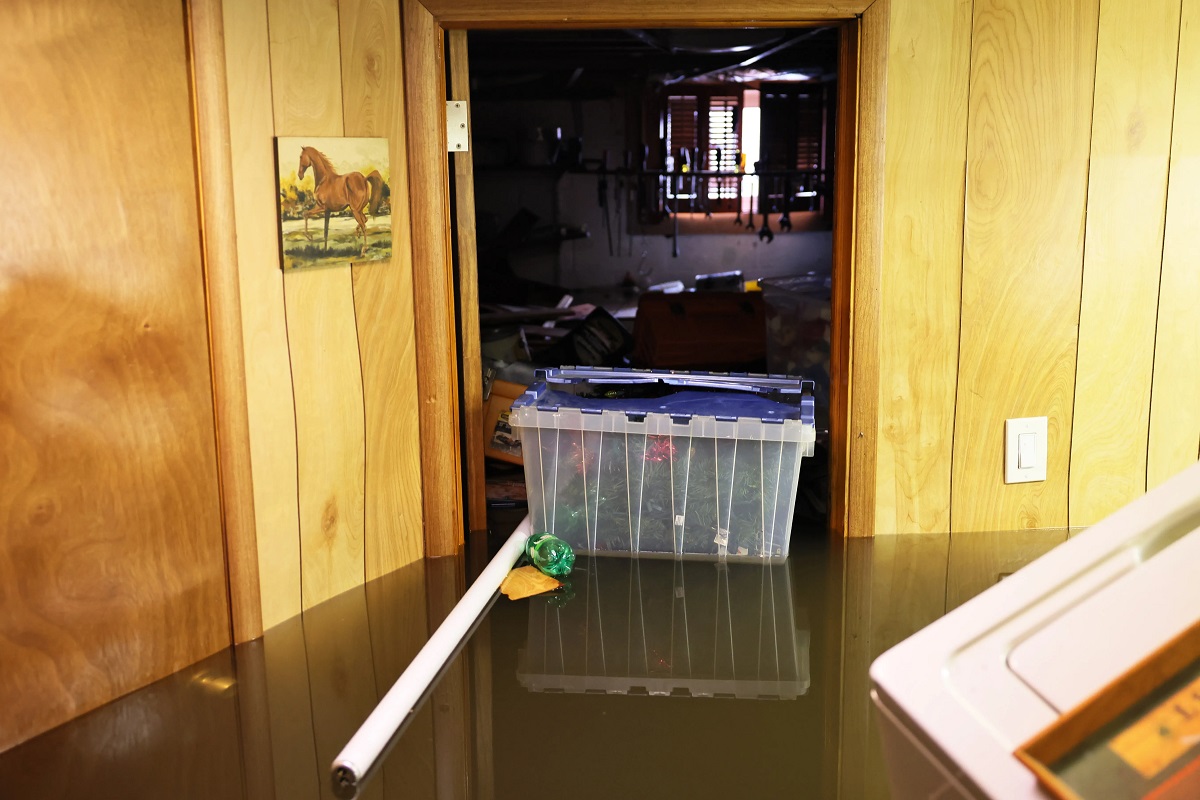

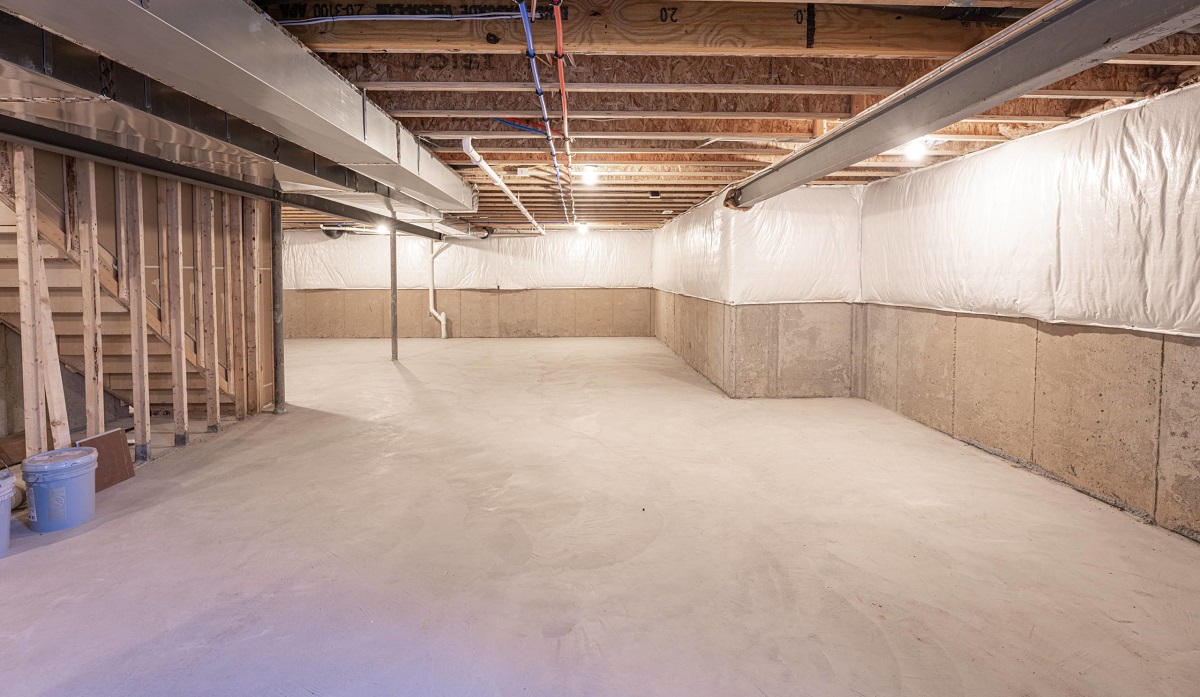

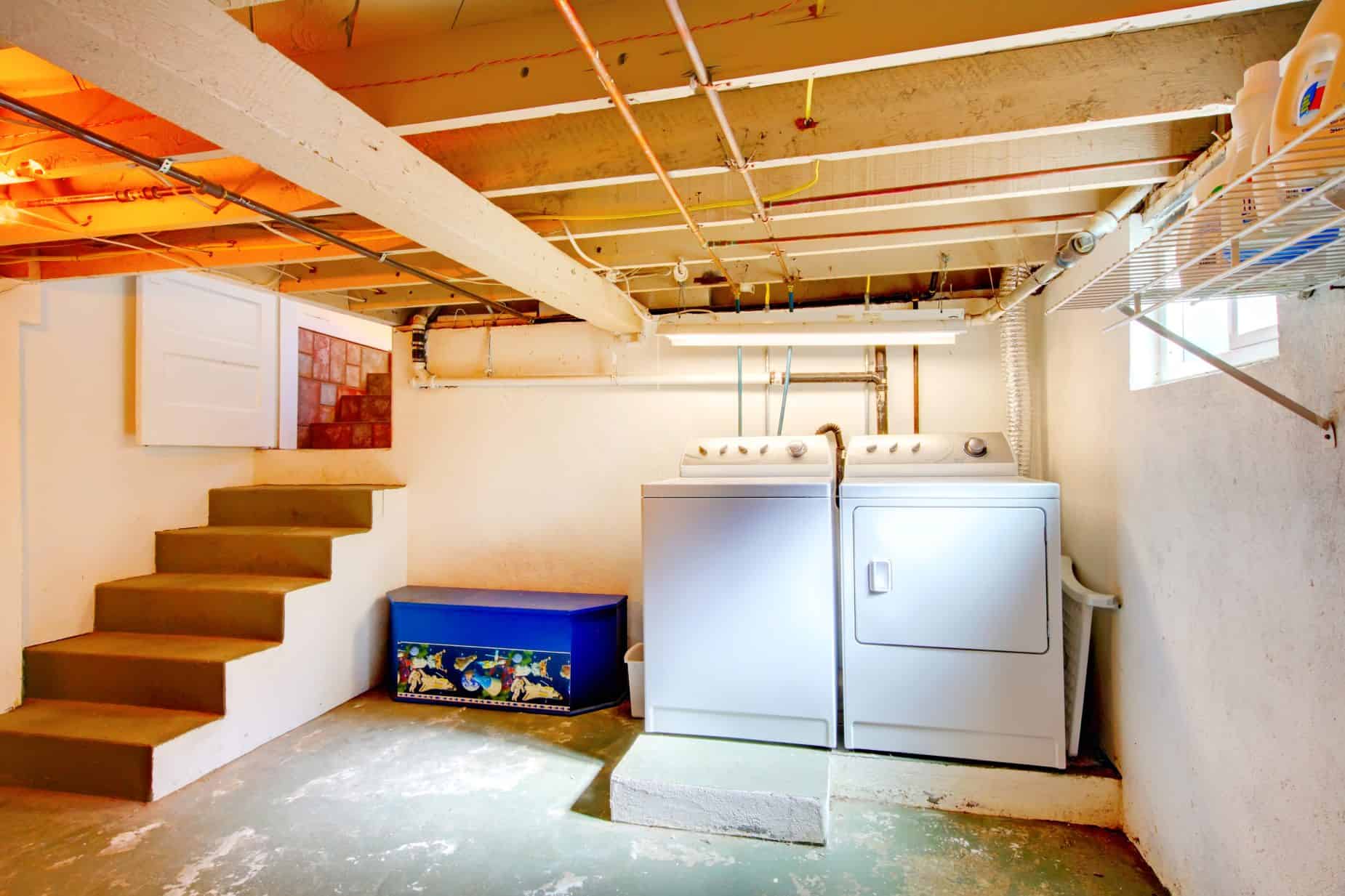
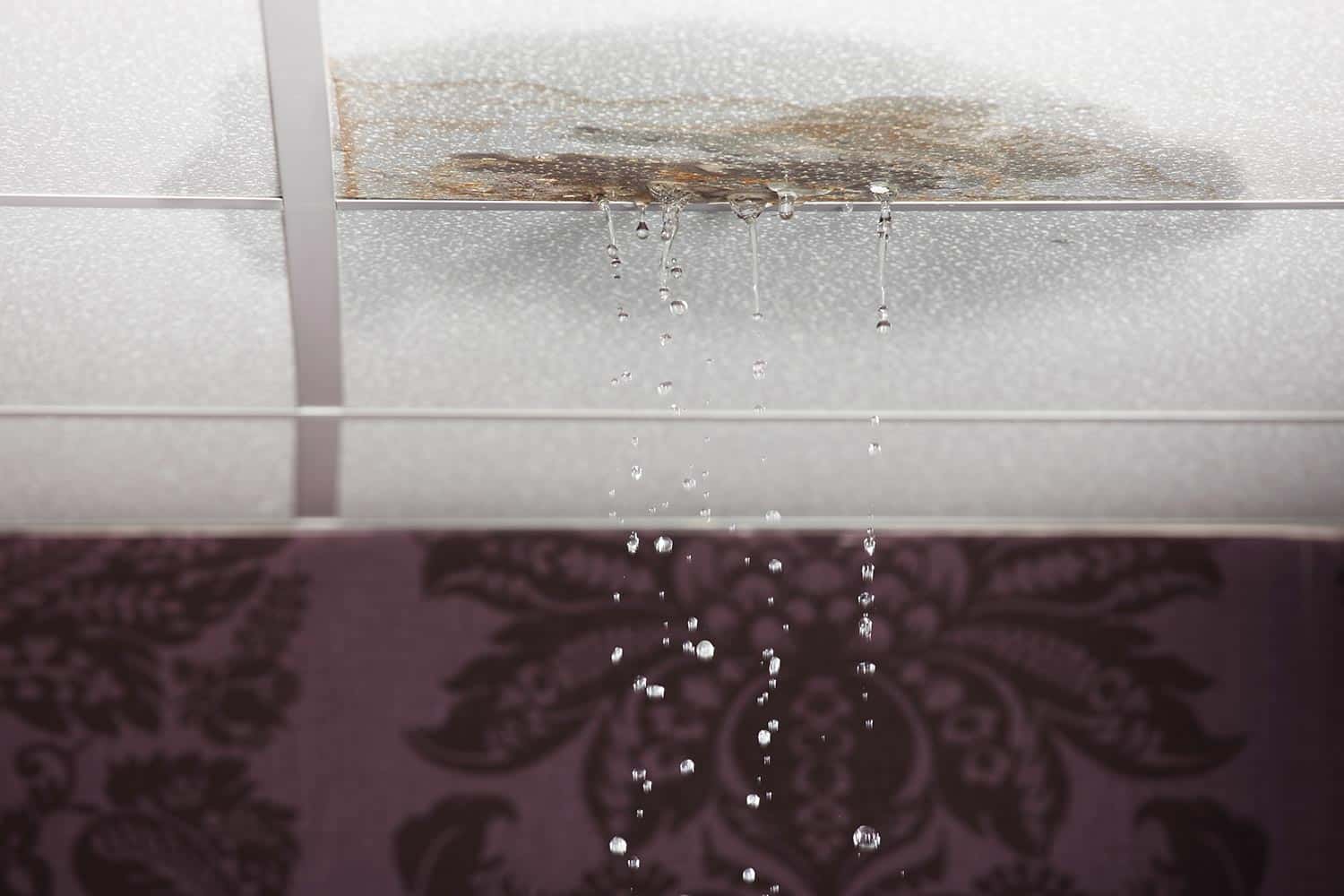
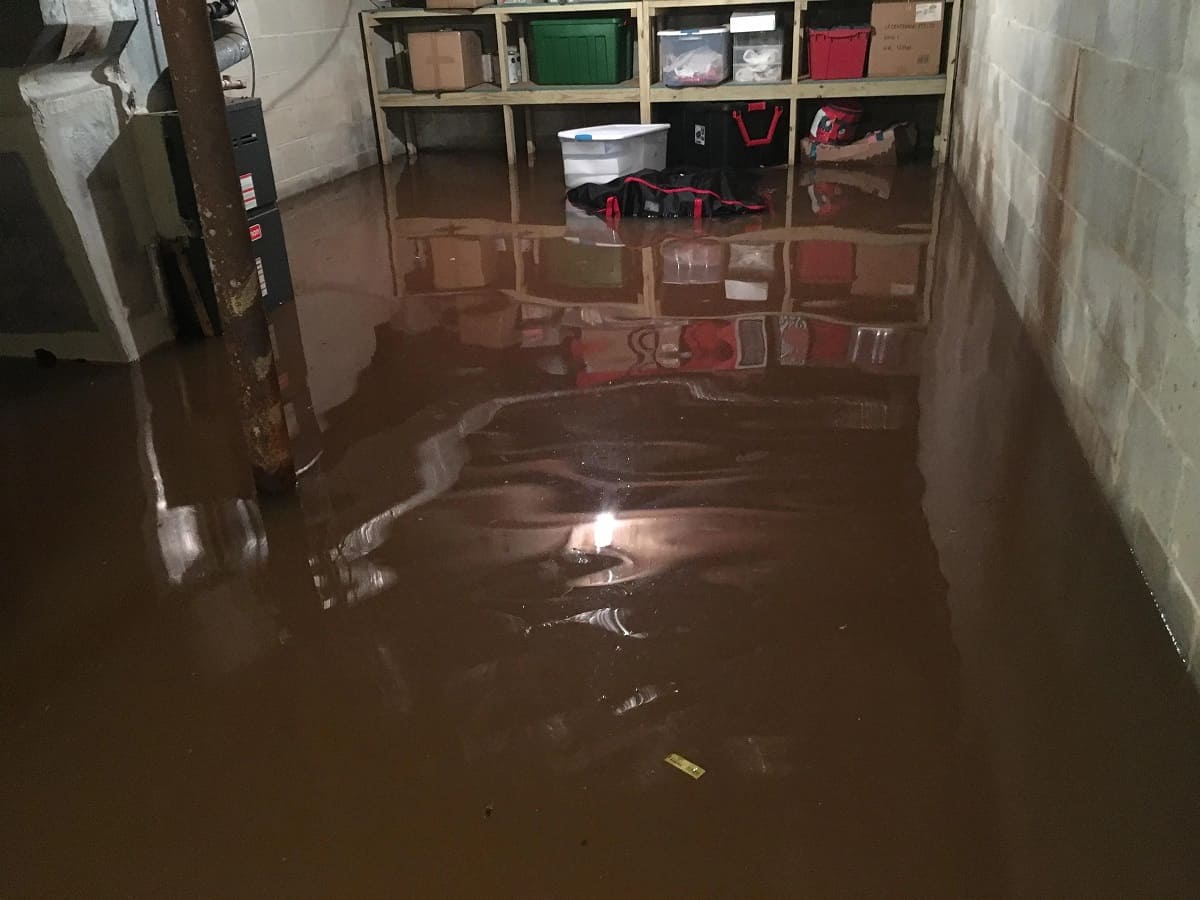
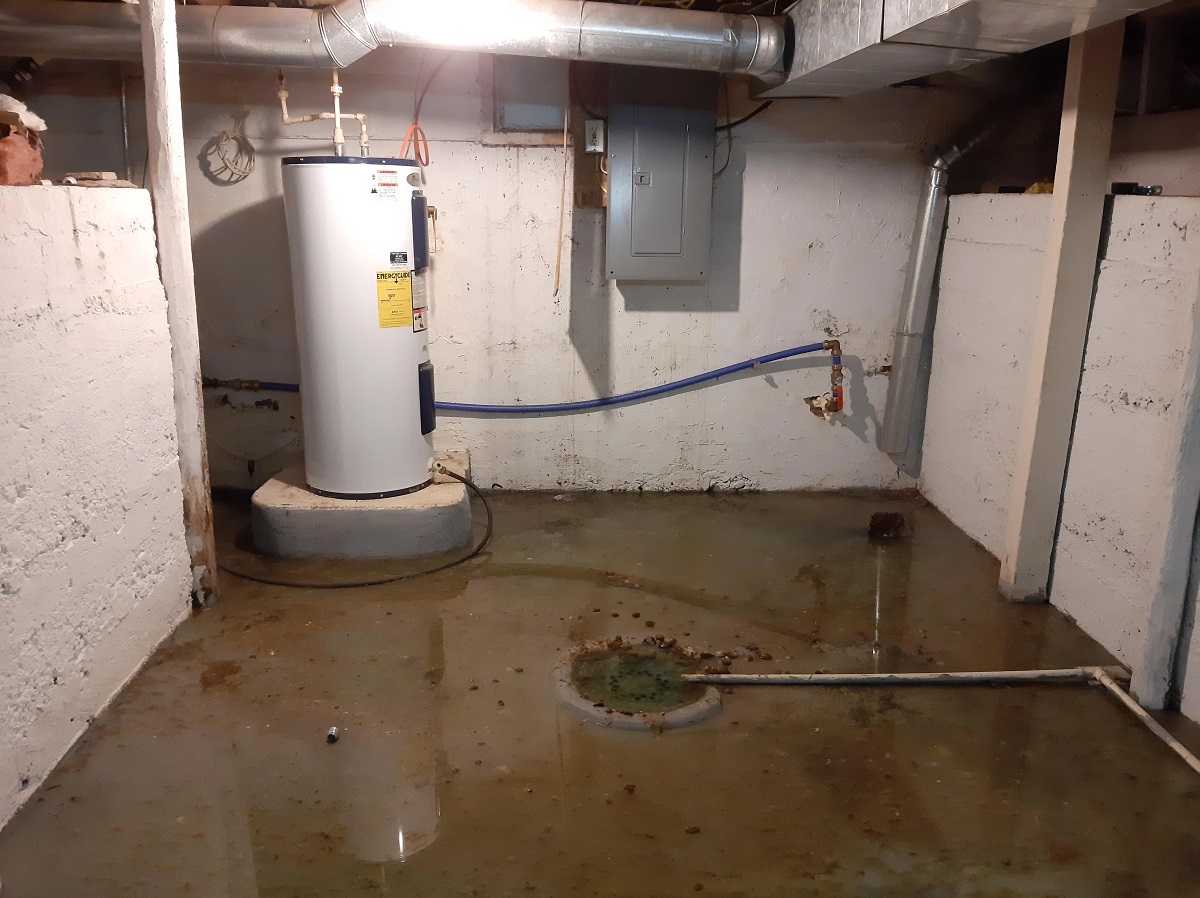
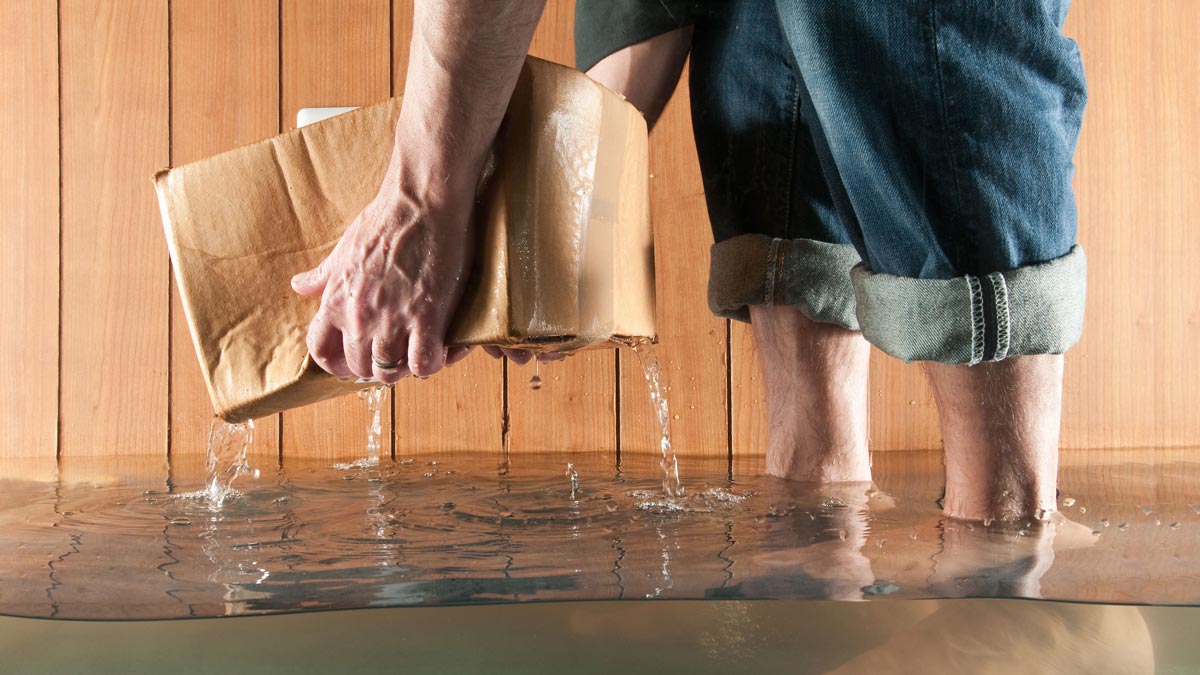
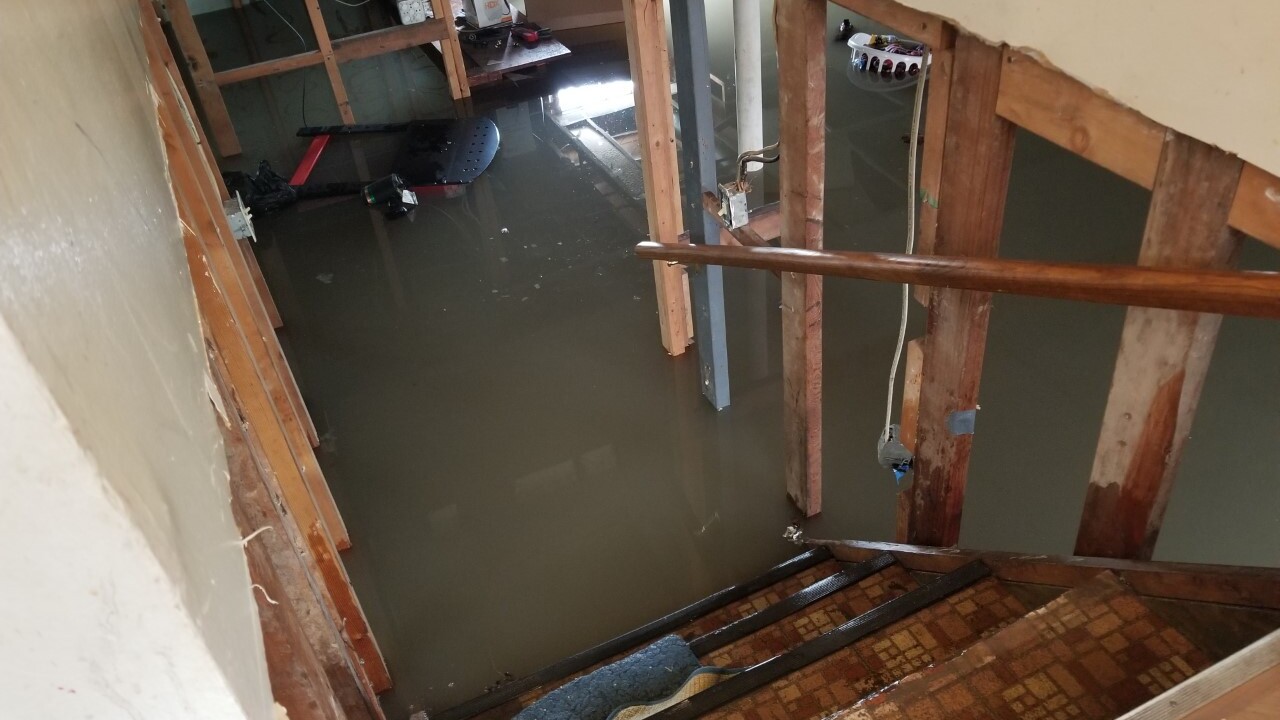
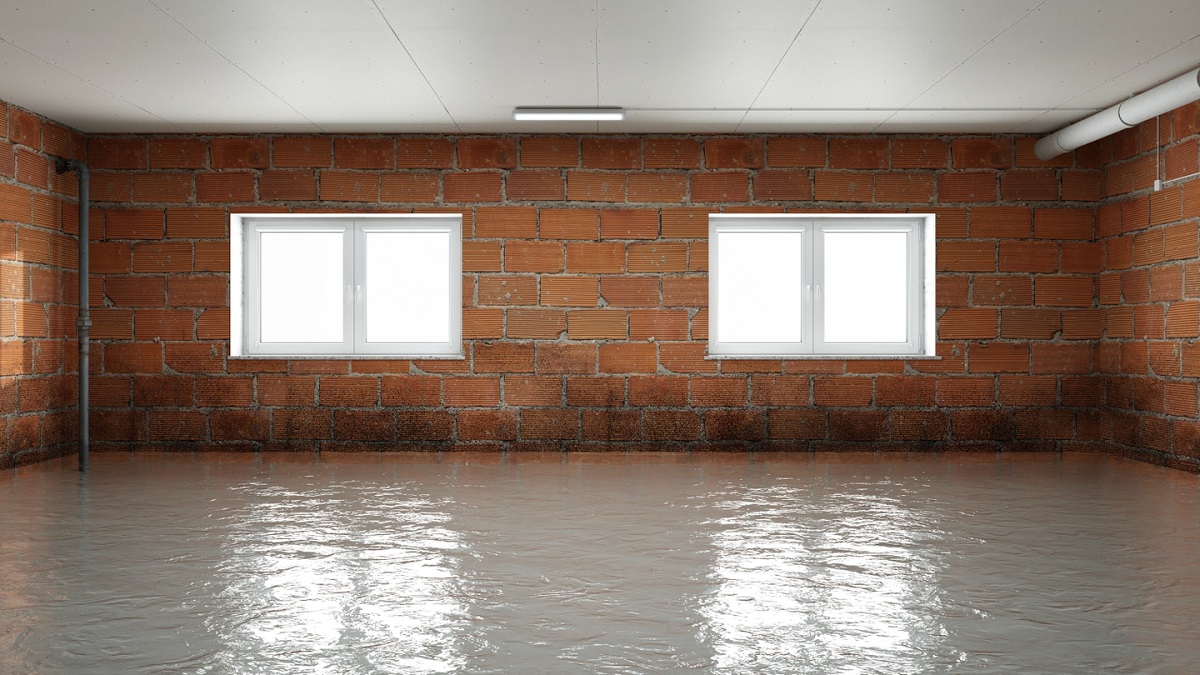
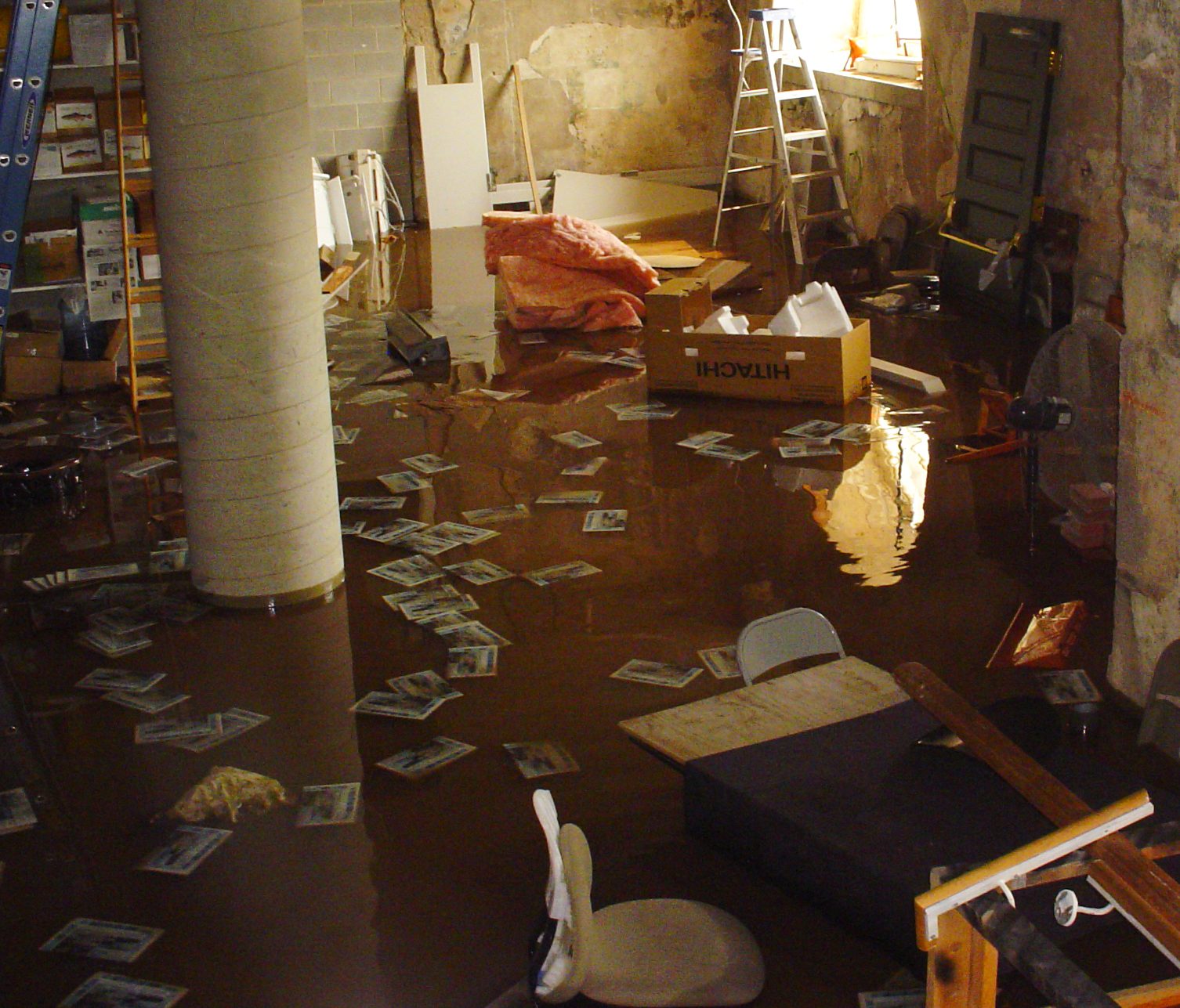

0 thoughts on “Why Does My Basement Flood”